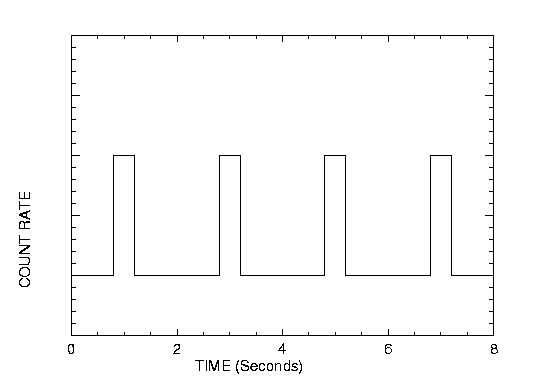Tools to plot source visibilities over the year and over the night from La Palma are available under "Visibility plots" on the NOT tools and resources for observers.page. Save the plots and include them in the report you hand in. (For gif images you have to right-click on the image and select save image. When saving you need to give individual file names for storage).
The first 2 columns are time and length of observation in MJD(days) and column 3 and 4 gives the flux in counts/s with the 1 sigma error.
53654.099697 0.003762 109.7818 1.13
53654.125143 0.020654 109.0764 0.60
53654.166156 0.020359 109.3476 0.61
53654.203552 0.017037 108.4437 0.60
Compute the weighted mean first with all 4 measurements and then with only the 3 last. Which value should you use? Why?
| The pulsar light curve is known
to be the one shown in the figure. The average count rate over the observation
is expected to be 1 photon per second, half of which is due to the background.
The pulsation period is 2 seconds, the pulse shape is rectangular and the
pulsar radiation is only seen during 20% of the period. A) For how long total time do you need to observe the pulsar to make a 3 sigma detection (S/N = 3) assuming that the background has already been determined with high accuracy. B) Do the same assuming that the background has to be determined from the faint part of the light curve (where the pulsar signal is = 0). See pdf-file with notes for lecture 1 on the course web page for hints about error estimation! |

|